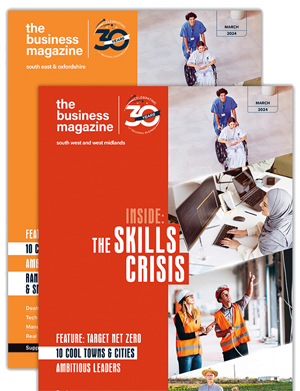Employee Ownership models offer an attractive exit for founders and a sustainable future for the companies they leave behind

Home-grown businesses are embedded in the fabric of their communities however, when an owner decides to sell, operations can be skimmed down before being transplanted elsewhere with the built-up jobs and wealth vanishing with them.
Employee Ownership (EO) either through a trust or shareholding offers the seller an attractive, and potentially tax efficient exit, while also rooting the firm where it is based and safeguarding its culture and employees.
EVENT: An Introduction to Employee Ownership Trusts
The Graeme Nuttall review of employee ownership in 2012 set out measures to encourage EO and outlined three models – Employee Owned Trust (EOT), direct shareholding and a hybrid approach.
EOTs see ownership of a business pass to employees via shares in a trust while direct shareholding sees a small or larger group of employees taking on shares in the company.
The hybrid approach of ownership which combines majority shareholding in a trust with direct ownership by some employees is also gaining traction.
The Employee Ownership Association put the number of EO businesses across the UK at 1,300 at the end of 2022 which was up by 285 from the previous year.
EO is proving particularly popular in the consultancy services industry with Guildford-based architects Scott Brownrigg and Bournemouth planning specialists Terence O’Rourke all switching to an EOT in 2022.
Fieldfisher is one of the UK's leading advisors when it comes to EO and has EOT report author Graeme Nuttall as a Partner.
Neil Palmer, a Partner at Fieldfisher, said: "EO provides a good way of exiting or putting together a succession strategy that enables you to structure an exit in a measured and thoughtful way as opposed to the big shouting match that a trade sale can become.
"It suits founders who want to protect their staff and value that has been built up as it is a way of locking in all the good things you have developed alongside preserving the ethos of the company.
"The business also remains rooted in the community. If you get acquired by a foreign entity then the business might move abroad whereas with EO the continuity is preserved."
Neil said that EOTs were particularly suited to companies with strong financial performance and that it is not the ideal solution for every business or founder.
He said: "EO is not for everybody and there are different ways of exiting a business or structuring a business.
"The valuation of the business will also come from an internal process meaning you don't get that competitive tension where you have people bidding for a business.
READ MORE: 100 best companies to work for in the South East
"EO suits good businesses with good finances. Founders have to be patient as they will be paid over a number of years and need to satisfy themselves that the company will generate enough money to pay them out."
One of the main incentives for founders in moving their business to an EOT model means that they forego Capital Gains Tax allowing a tax efficient exit of their company.
James de le Vingne, CEO of the Employee Owner Association, said that companies that transitioned to an EOT where the founders’ motivation was solely based around a tax incentive could run into future difficulty.
He said: "EOT is a highly tax efficient way to dispose of a business however if this is the only reason then the new employee owners are unlikely to be aware of the potential opportunities that are now with them that will enable them to unlock good employee ownership."
EOTs are designed to be a settled state for a business, according to Neil Palmer, who said that reversing the trust arrangement was a challenging process.
He said: "It is not irreversible but it is considered an end state and it is more challenging to change the structure in future.
"When you sell a business that is in an EOT, you are selling it out of trust which is a disqualifying event for the tax relief, meaning the trust or founders would have to pay the Capital Gains Tax.
"It's not a mechanism which lends itself to future change, be it a merger, offer or IPO. It can be done but there is a tax price to pay."
James said that good employee ownership is built around the three pillars of governance, communications and engagement alongside strong leadership.
He said: "When all those three things are firing and working well then you activate great EO.
"You want everyone in the business to be able to respond to relevant financial information and you do this by communicating this information in an engaging way so that it is a two-way exchange.
"In an EO model, leadership happens within every level of the business and middle managers in particular need to be equipped with the right information to deal with this and set parameters."
EOT models have the share-holding trust at their heart with companies that have successfully transitioned supplementing it with a management board and various councils and voice groups that feed into the management structure.
Neil Palmer said: "The real work starts when you complete the deal and set it up as people have to be invested in the structure to make it work.
"There has to be the energy, enthusiasm and entrepreneurialism that was once provided by the founder as the company will have to remain relevant."
EO models can also provide a competitive edge in the marketplace particularly when it comes to attracting and retaining staff while better deals can be struck with suppliers who know they are dealing with a robust entity that it is unlikely to deviate on terms.
James said: "EO offers employees a meaningful say in how the business is run so is therefore a key retention tool.
"It also speaks to the cultural change that is happening within the workplace where there is an expectation, especially in the younger workforce, to have a say in where they work.
"The Graeme Nuttall review found that EO leads to better staff engagement, better productivity and more sustainable businesses."













